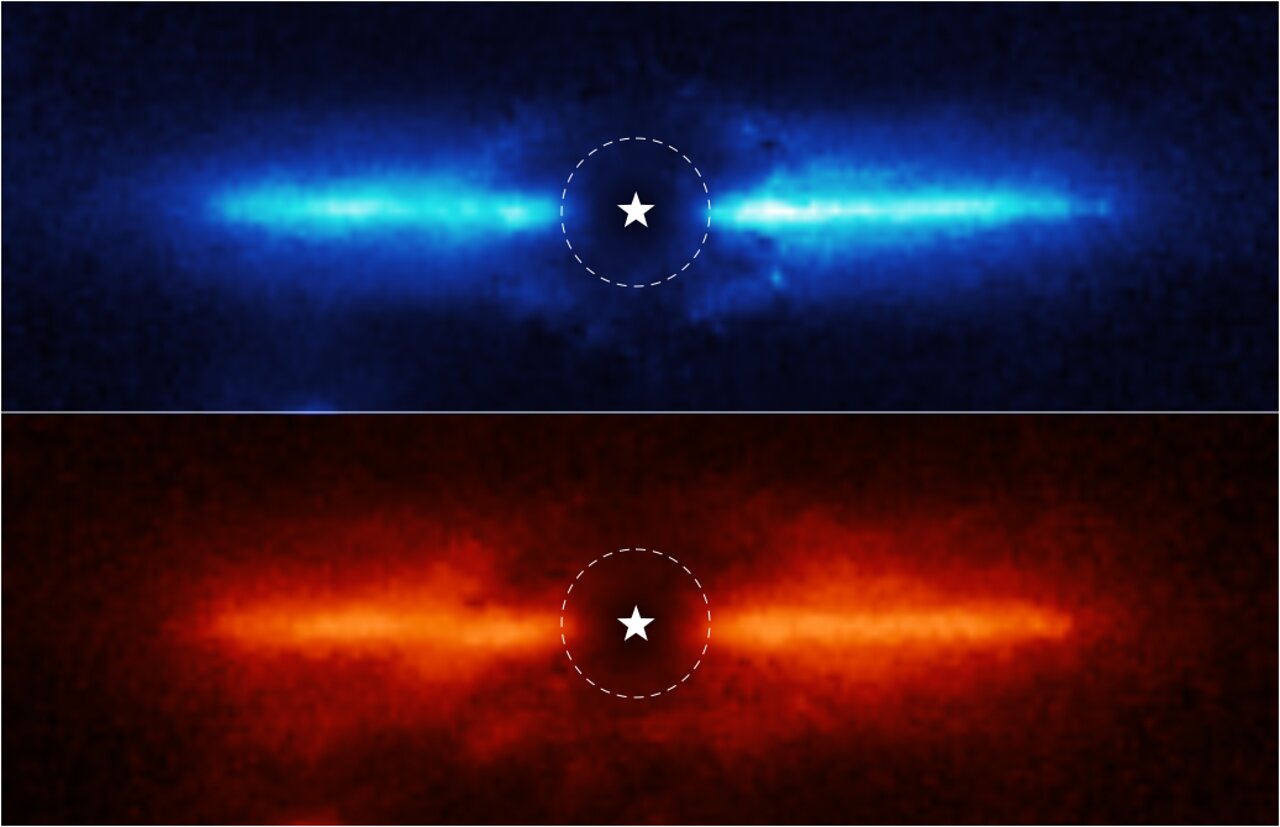Circumstellar Disc
Circumstellar discs are discs of dust, gas, asteroids and other objects that rotate around a star. Circumstellar discs around newly formed stars are known as protoplanetary discs.
Stars form from dust and gas. After a star is formed, the remaining dust and gas is trapped in orbit, forming a rotating disc or torus around the young star, known as a circumstellar disc. The circumstellar discs around young stars are known as protoplanetary discs, because they provide the reservoir of materials from which new planets may form. Protoplanetary discs are thought to be made up of 99% gas and 1% dust. As planets form and stellar systems evolve, their circumstellar discs also evolve. Circumstellar discs around older stars may include dust, gas, asteroids, comets, planets and other debris. Our Sun has several circumstellar discs: the asteroid belt, the Kuiper belt and the Oort cloud.
Webb will be able to directly examine the protoplanetary discs around distant stars, trace out asteroid belts, detect gas clouds and pinpoint exoplanets. Circumstellar discs are composed of various types of dense gas and dust; operating at infrared wavelengths allows Webb to see through this dust and examine objects that may lurk within — particularly giant exoplanets, similar to Jupiter or Saturn, in wide orbits. Planets like these are difficult to detect using the transit or radial velocity methods, and so Webb will expand the range of distant worlds that we can study.
Comparing images taken at differing infrared wavelengths also gives Webb the ability to distinguish the composition of a disc. In these NIRCam images of the disc around the star AU Mic, researchers found that the disc contained mostly finer, bluer dust and they were able to obtain a very accurate measurement of the disc's size. NIRCam is equipped with a coronagraph, which will allow the study of circumstellar discs like this very close to their host stars.
Protostars that are in the process of forming also feature their own protoplanetary discs of gas and dust: studying these can tell us how planetary systems form from the very beginning. Soon after launch Webb returned this breathtaking image of the protostar L1527, in which the protoplanetary disc is distinct among the blazing clouds.




